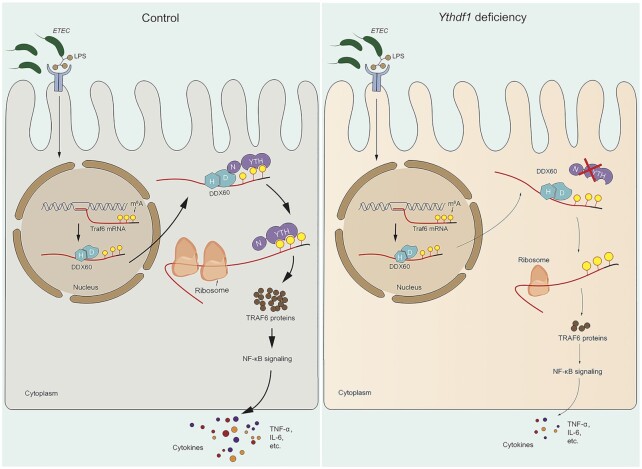Figure 7.
Model depicting the proposed mechanism by which YTHDF1 modulates the intestinal immune response to bacterial infection. Left: Upon bacterial infection (e.g. with ETEC) of an intestinal epithelial cell, DDX60 binds to the Traf6 transcript via its HELICc domain, transporting the transcript to the cytoplasm, where DDX60 interacts with YTHDF1 by recognizing the m6A-modified Traf6 transcript, driving the translation of Traf6 and upregulating the production of cytokines such as TNF-α and IL-6. Right panel: Loss of YTHDF1 significantly decreases the translation efficiency of Traf6 transcripts, leading to reduced cytokine production, increased survival of intestinal epithelial cells, and a reduced immune response.

